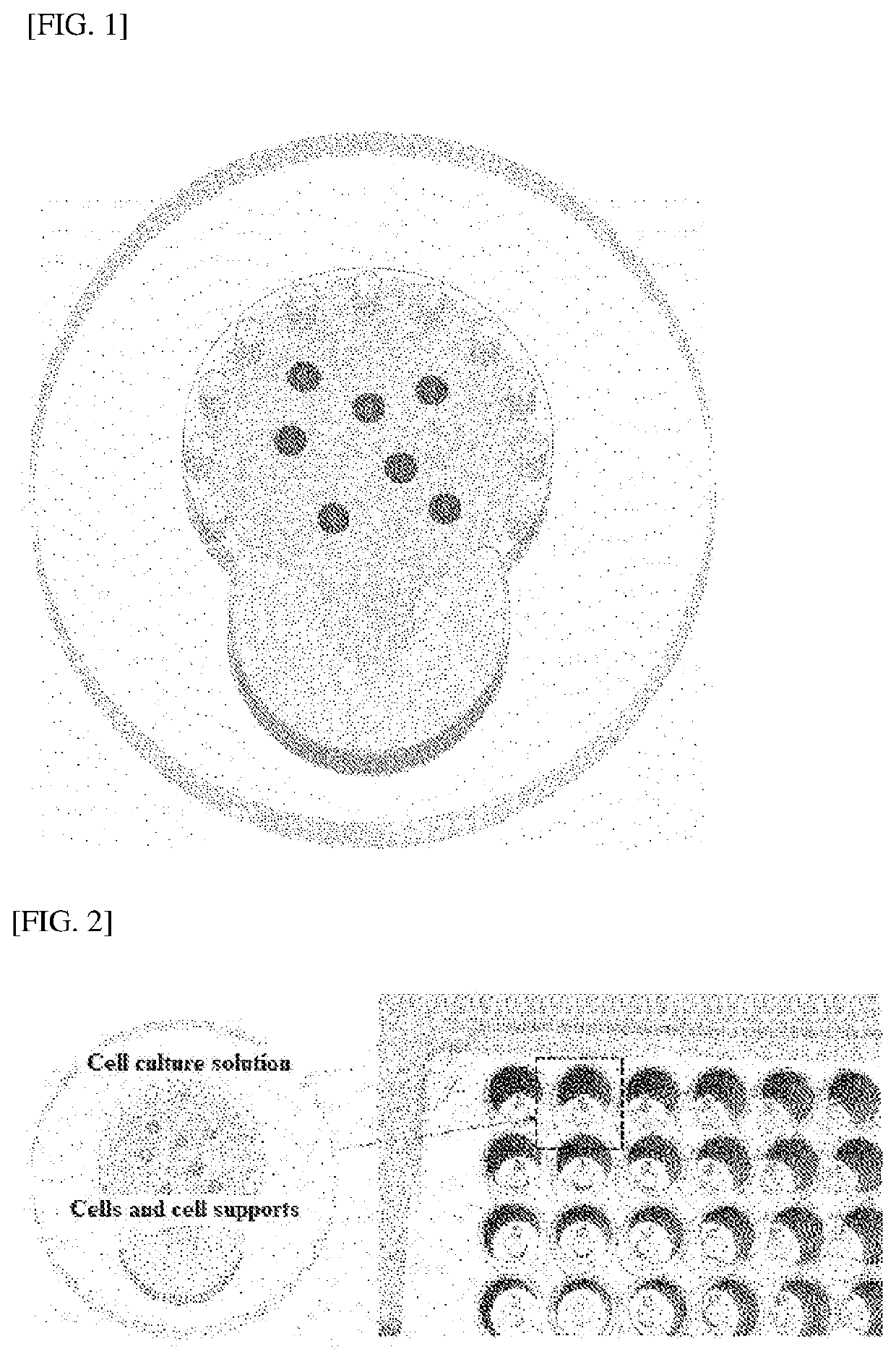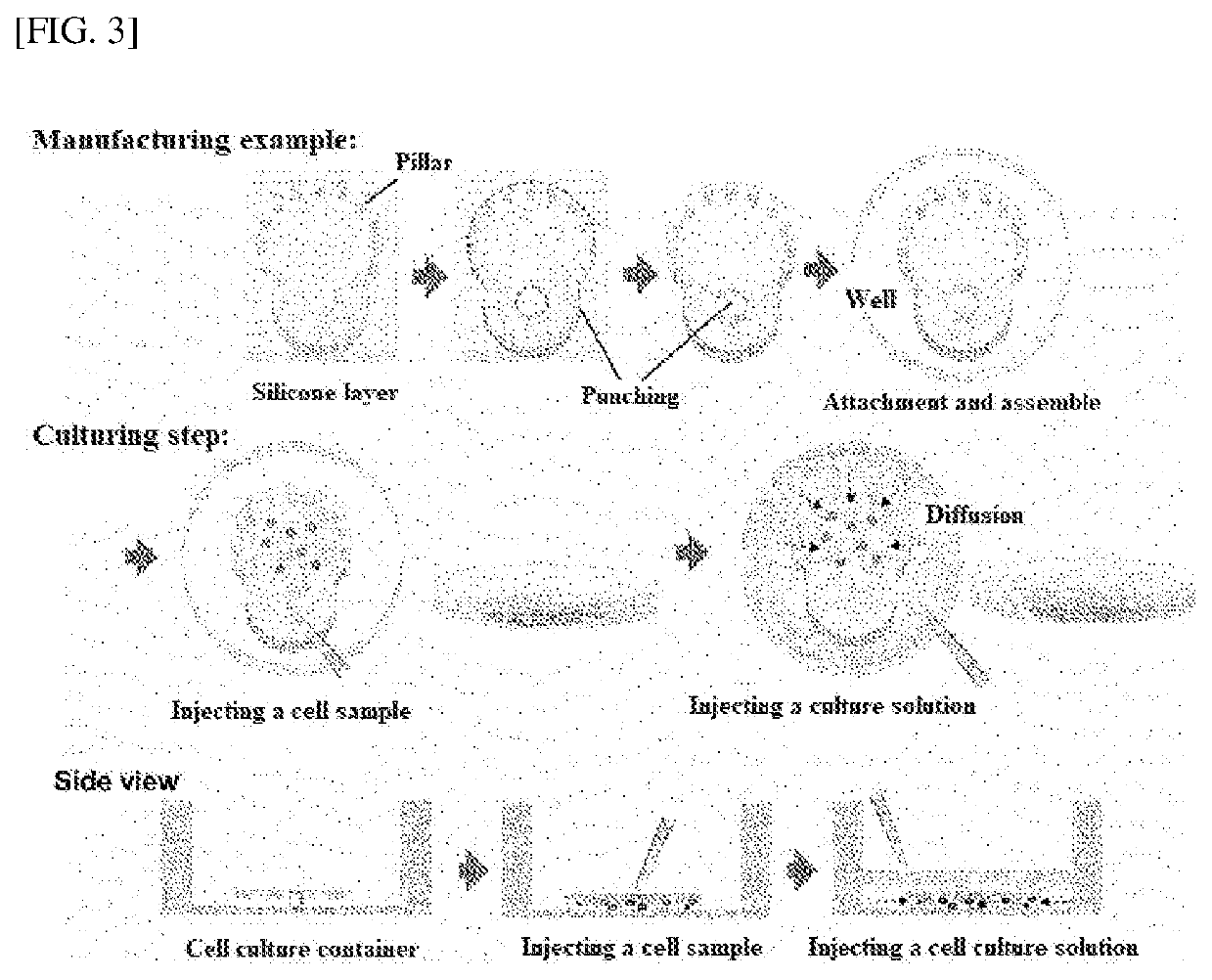Three-dimensional cell culture container
a cell culture container and three-dimensional technology, applied in the field of three-dimensional cell culture containers, can solve the problems of difficult microscopy observation of culturing results and quantitative analysis, affecting the reliability of experimental results, and the complexity of injection methods, etc., to facilitate the operation of an experimenter, easy and uniform injection, stable cell growth
- Summary
- Abstract
- Description
- Claims
- Application Information
AI Technical Summary
Benefits of technology
Problems solved by technology
Method used
Image
Examples
example 2
ate of Sample Injection According to Hydrophilicity Degree of Container Surface
[0030]In the present experiment, after performing a hydrophilic treatment process (a plasma treatment process) on a cell culture device and surfaces of pillars, a success rate of determining if samples injected into a container were well seated on an inner portion of the container was examined. Right after performing the plasma treatment process, the container is hydrophilic by having a high surface energy, and the container gradually recovers hydrophobicity as time goes by. Since the surfaces of the pillars have good wettability when the surfaces of the pillars are hydrophilic, the sample easily comes out to the outside of the pillars, and a sample loading failure rate is increased, while a sample loading success rate is increased by surface tension of liquid as the surfaces of the pillars recover hydrophobicity. In order to maximize effects of a gap between the pillars and diameter of an injection part ...
example 3
ize of a Cell Injection Part Through Confirmation of Material Exchange of Cells with a Medium
[0031]In order to draw size of a cell injection part of a level capable of appropriately performing a material exchange process between a medium and a cell sample inside a barrier formed in a plurality of pillars, a material exchange experiment was conducted at intervals of 1 mm from 2 mm to 5 mm of diameter of a cell loading part. Thickness of the upper plate or the bottom surface (thickness of the sample) was fixed to 250 μm.
[0032]ReN-VM (Neural stem cell) was used as a cell, and cell culturing conditions and observation criteria are as follows.
[0033]Name of cell: ReN-VM (Neural stem cell)
[0034]Matrigel concentration: 5.7 mg / ml
[0035]Cell concentration: 1.0×107 cells / ml
[0036]Culture period: 1 week
[0037]Staining method: FITC-phalloidin, 50 min
[0038]As results of the experiment, it can be confirmed as illustrated in FIG. 6 that differentiation is well performed at a diameter of the cell cultu...
PUM
| Property | Measurement | Unit |
|---|---|---|
| inner diameter | aaaaa | aaaaa |
| inner diameter | aaaaa | aaaaa |
| diameter | aaaaa | aaaaa |
Abstract
Description
Claims
Application Information
 Login to View More
Login to View More - R&D
- Intellectual Property
- Life Sciences
- Materials
- Tech Scout
- Unparalleled Data Quality
- Higher Quality Content
- 60% Fewer Hallucinations
Browse by: Latest US Patents, China's latest patents, Technical Efficacy Thesaurus, Application Domain, Technology Topic, Popular Technical Reports.
© 2025 PatSnap. All rights reserved.Legal|Privacy policy|Modern Slavery Act Transparency Statement|Sitemap|About US| Contact US: help@patsnap.com



